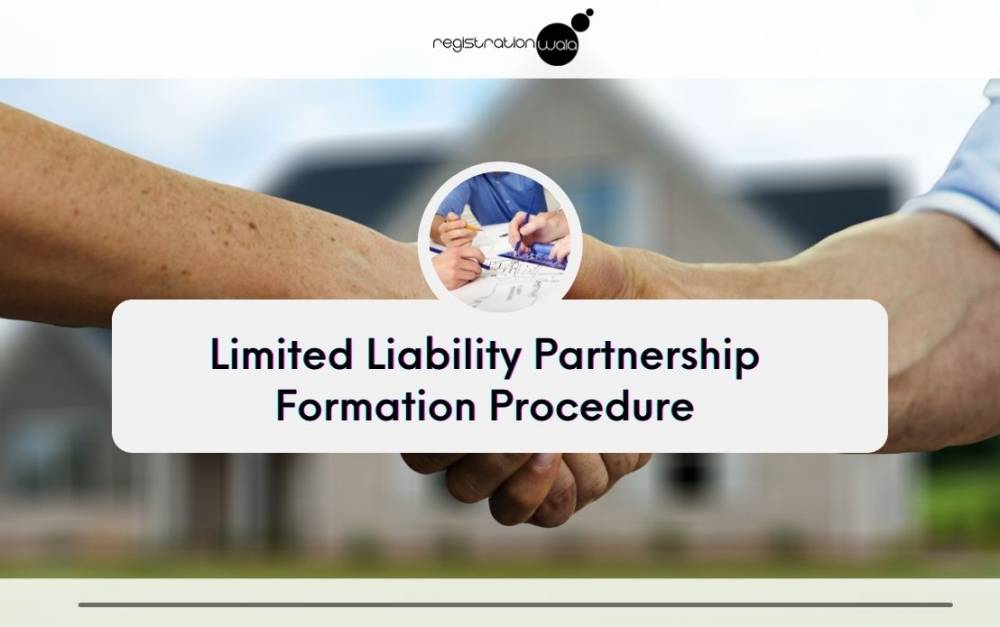Limited Liability Partnership Formation Procedure
- March 09, 2022
- Registrationwala

- Home
- /
- Knowledge Base
- /
- Business Registrations
- /
- Limited Liability Partnership
- /
- Limited Liability Partnership Formation Procedure
Limited Liability Partnership Formation Procedure
Nowadays, day's entrepreneurs are opting for Limited Liability Partnership for doing business due to its special positive features. Limited Liability Partnership (LLP) is a separate legal entity in which an investor's liability is limited to the amount of investment in the LLP.
It is a combination of partnership and corporate, having flexibility and tax status of partnership while having status of body corporate. Being a separate legislation, the provisions of the Indian Partnership Act, 1932 are not applicable to LLP. It is governed/managed as per LLP agreement and registered under Limited Liability Partnership Act, 2008 and the rules made there under. LLP partners do not receive dividend, but are entitled to receive income/profits as per the LLP Agreement.
FEATURES of LLP
- The LLP has Separate Legal Entity; i.e. the LLP and the partners are distinct from each other.
- A minimum of 2 partners are required to form an LLP. However, there is no limit on the maximum number of partners.
- No requirement of minimum capital contribution
- Partner's liability is limited to the extent of the agreed contribution in the LLP agreement.
KEY POINTS
- All the Designated Partners of the proposed LLP should have a Designated Partner Identification Number (DPIN). The Directors Identification Number (DIN) can be used instead of the DPIN if the partner is already having a DIN.
- One of the Designated Partners of the proposed LLP should be a resident of India. In case of a LLP in which all the partners are bodies corporate or in which one or more partners are individuals and bodies corporate, at least two individuals who are partners of such LLP or nominees of such bodies corporate shall act as designated partners.
BENEFITS OF LLP
- Less restrictions and compliance are enforced on an LLP by the Govt as compared to the restrictions enforced on a Company.
- The liability of each partner is limited to the amount of investment in the LLP.
- It has a low cost of formation and is easy to form with 2 partners.
- The Partners are not liable for the acts of each other and can be held liable only for their own acts as compared to Partnerships wherein they can be held liable for the acts of their partners as well.
- LLP can sue in its name and be sued by others. The partners are not liable to be sued for dues against the LLP.
PROCESS FOR INCORPORATION OF LIMITED LIABILITY PARTNERSHIP (LLP)
5 simple steps to incorporate a LLP:
- Step 1:Acquire and Register DSC of all partners.
- Step 2:Obtain Designated Partner Identification number (DPIN) of all the partners of Proposed LLP in form DIR-3
- Step 3:Apply for reservation of name of LLP in E-form 1.
- Step 4:Filing of Incorporation Document and Subscribers Statement Details of registered office, partners, etc has to be filed in E-form 2.
- Step 5:Drafting and filing of LLP Agreement in form 3 within 30 days of incorporation of LLP
DOCUMENTS REQUIRED FOR INCORPORATION OF LLP
- Self attested copy of PAN Card of all the partners.
- Self attested copy of Address Proof of all the partners (Electricity bill/Gas bill/Telephone/mobile bill/Bank Statement)
- Property papers copy in case of owned property or Rent agreement copy in case of rented property.
- Electricity/ water bill/Gas bill of registered office
- Statements by an Advocate/ CA/ CS/Cost Accountant in Practice that all requirements of LLP Act, 2008 and Rules made thereunder are complied with.
- Consent of Designated Partners/ Partners to act as such.
- 3329 views
